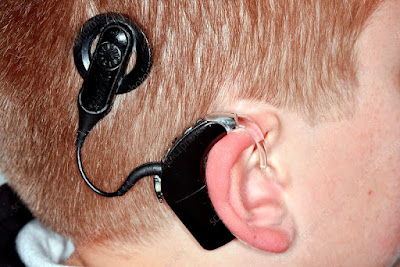A cochlear implant, also known as a cochlear adapter, is a surgically planted neuroprosthetic device that gives a disabled person a modified hearing capability. The implants are a new way to help deaf people hear and speak again. A cochlear implant contains a small microphone and speech processor. After the procedure, a transmitter sends digital signals to a cochlear implant receiver. The processor then sends electrical impulses to electrodes in the cochlea. The electrodes stimulate the auditory nerve and send a message to the brain. Once the information is received, the brain interprets the information and recognizes the sounds. The implant receiver is then able to identify speech and sounds and understand the speech of the person using it.
Once the cochlear implants have been placed in the ear, a second surgery is needed to connect the device to the outside part. This procedure may take anywhere from one to four weeks. While many hospitals allow you to go home the day of surgery, some require you to stay overnight. You'll likely be given pain medications and antibiotics to help the healing process. After surgery, the external part of the cochlear implant is attached to a receiver-stimulator that sits behind the ear.
There is no immediate difference in the quality of speech. After cochlear implant surgery, you'll need to undergo extensive testing. An audiologist and a speech-language pathologist will assess your candidate's hearing and assess your hearing. A CT scan and MRI will be used to check the inner ear structures and to decide if a cochlear implant is right for you. This is the only option if you're considering a cochlear implant.
Patients find that they can perceive sound above or beyond the binaural field normally reserved for normal hearing. These implants stimulate the cochlear nerve. The electronic device has internal and external components. The internal part sits just above the ear on top of the head. It picks up external sounds using a microphone attached to a generator, which is located inside your inner ear.
Cochlear implants are available in several types; all share basic features. You can use them to treat mild deafness which is caused by wax build-up in the auditory canal. After the cochlear implant is implanted, you'll have several appointments with your audiologist. The first fitting is scheduled about four weeks after the procedure. The next appointment is called activation day, when your audiologist turns on the audio processor. You'll need to continue with speech-language therapy and at-home exercises to make the most of your new hearing. The doctor will also monitor your progress and make sure that you're getting the best benefit from your cochlear implant.




No comments:
Post a Comment